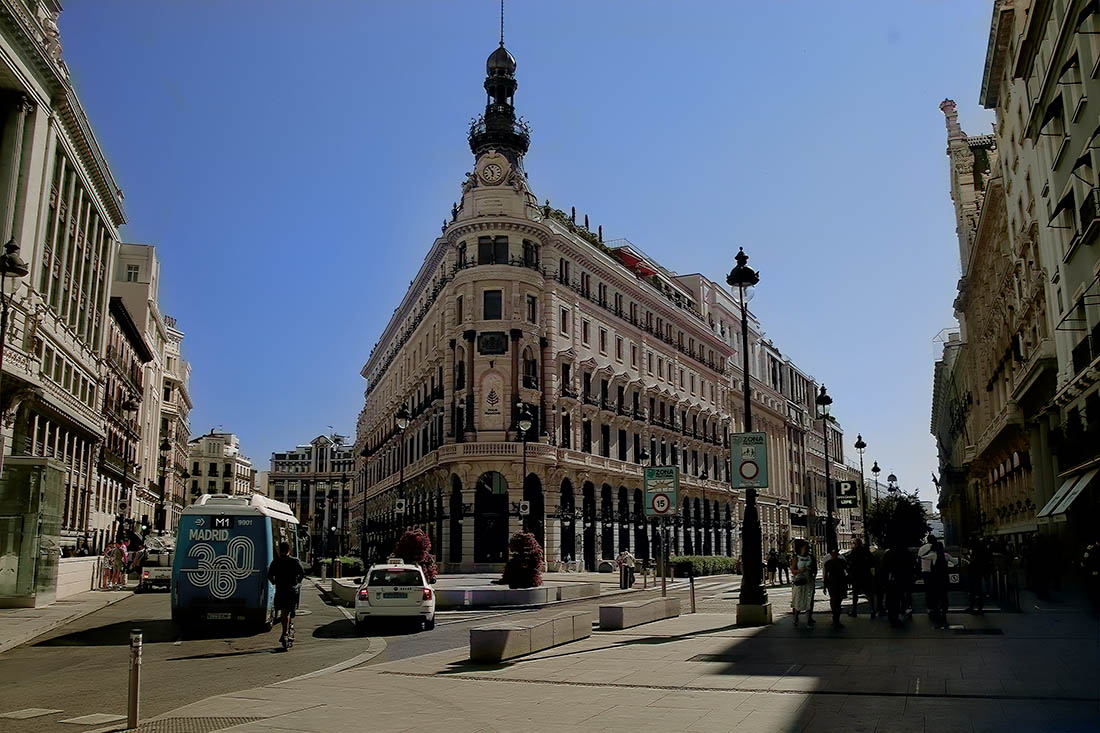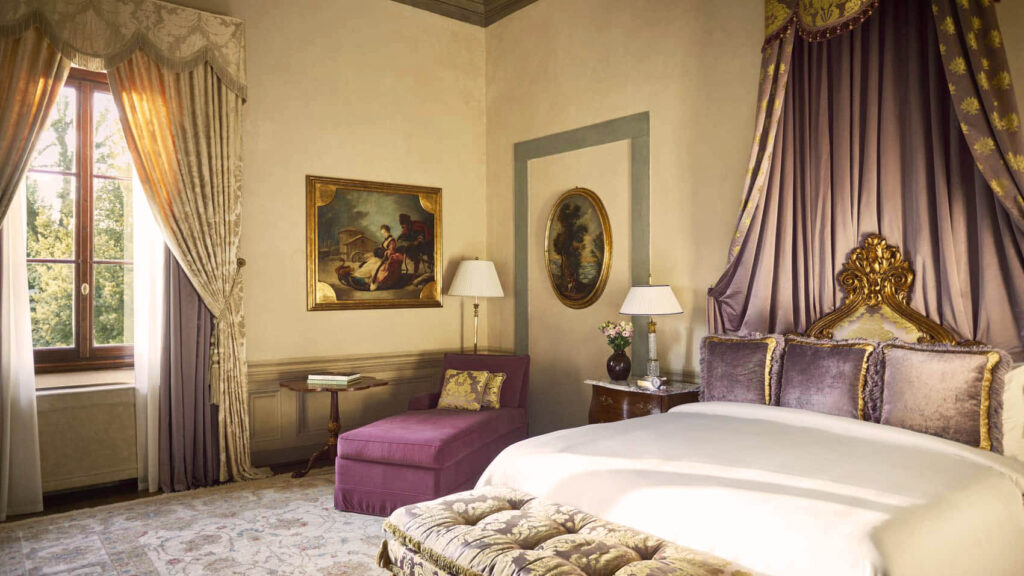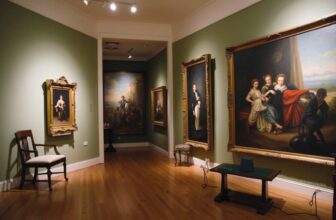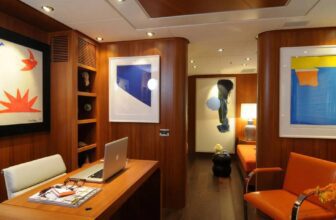
How Luxury Resorts Incorporate Fine Art into Their Design
The Intersection of Art and Hospitality
In the world of luxury resort design, aesthetics and experience intertwine. High-end travelers today are not just seeking comfort, they crave immersive, culturally rich environments that inspire emotional connection. For this reason, fine art has become a cornerstone of the luxury hospitality experience. Beyond decoration, it plays a strategic role in branding, storytelling, and spatial design.
The modern luxury resort is now a living gallery, where fine art in hotels reflects not only local heritage but also global sophistication. From the curated installations at Aman Resorts to bespoke commissions at The St. Regis, fine art elevates architecture and guest perception alike.
This article explores how luxury resorts incorporate fine art into their design, analyzing the philosophy, execution, and business strategy behind these artistic integrations.
Art as a Core Element of Brand Identity
1.1 From Visual Appeal to Emotional Signature

Four Seasons Hotels Artistic Design
Luxury resorts differentiate themselves through emotional resonance. Art is one of the most potent tools for creating that resonance. Fine art communicates the brand’s values, vision, and sense of place without words. For instance, The St. Regis Hotels & Resorts have long used commissioned art to evoke timeless glamour and cultural refinement, an identity rooted in the brand’s heritage from the original St. Regis New York.
Each St. Regis property integrates a signature mural or sculpture that ties into its city’s history, subtly reinforcing the global identity while celebrating local nuance. This balance, between consistency and individuality, is key to maintaining a luxury brand’s DNA through design.
1.2 Art as a Symbol of Exclusivity
Art inherently conveys exclusivity. Original pieces by celebrated or emerging artists offer a unique, unreplicable guest experience, a core differentiator in the saturated luxury market. Resorts like The Ritz-Carlton, Kyoto or Rosewood Hong Kong feature curated collections that rival small museums, signaling both prestige and cultural depth.
In such spaces, guests feel part of something elite, an exclusive cultural journey, not just a vacation.
The Curatorial Process: Collaborations Between Artists, Designers, and Curators
2.1 The Role of the Art Curator in Hospitality Design
While interior designers conceptualize the spatial flow and aesthetics, art curators bridge the creative gap between architecture and storytelling. In high-end resorts, the selection process often mirrors that of a gallery or museum. The curator’s role involves:
Establishing a thematic or narrative framework aligned with the resort’s location and brand.
Selecting artists whose work complements the architecture and materials used.
Coordinating installation logistics with architects and lighting designers.
For example, Aman Tokyo collaborated with Japanese curators and artisans to feature handcrafted screens and calligraphy that reflect Zen philosophy. Every visual element serves both aesthetic and meditative purposes, aligning with Aman’s brand ethos of serene minimalism.
2.2 Artist Commissions and Site-Specific Works
Rather than sourcing artworks post-construction, top-tier resorts integrate art from the earliest stages of design. Site-specific commissions, sculptures, murals, or installations, become part of the building’s identity.
At Four Seasons Resort Oahu at Ko Olina, for example, Hawaiian artists were commissioned to create pieces that evoke native flora and oceanic mythology. This fusion of local narrative and contemporary form turns the resort into an artful interpretation of its natural setting.
By investing in commissioned work, resorts ensure their art program is authentic, cohesive, and irreplaceable, essential qualities in the luxury sector.
Cultural Storytelling Through Fine Art
3.1 Reflecting Local Heritage
One of the strongest trends in art-inspired hospitality is the integration of local artistry. Travelers increasingly seek cultural immersion, and fine art provides a tangible bridge between the global and the local.
For instance, Six Senses Bhutan features regional art inspired by Himalayan traditions. Hand-painted Thangka artworks, textiles, and sculptures are created by local monks and artisans, each piece symbolizing the region’s spiritual heritage. This approach not only enhances the guest experience but also supports cultural preservation and community engagement.
3.2 Modern Interpretations of Tradition
Luxury resorts often reinterpret local traditions through modern artistic expressions. At The Ritz-Carlton, Bali, traditional Balinese motifs are rendered through contemporary mediums like glass and metal, merging ancient craftsmanship with modern design sensibilities.
This juxtaposition appeals to discerning travelers who appreciate cultural authenticity presented through a refined, global lens.
Integration of Art and Architecture
4.1 Architectural Harmony
In the best examples of luxury resort design, art is not an addition but an extension of the architecture itself. Sculptures may double as structural features; murals may define the rhythm of public spaces.
At Amanpuri in Phuket, the architecture’s minimalist geometry provides a serene canvas for carefully placed Thai sculptures and temple-inspired carvings. The art becomes inseparable from the resort’s architectural language, creating a unified sensory experience.
4.2 Materials, Texture, and Light
Designers leverage materials and lighting to enhance the art’s presence. Natural light, shadow play, and spatial proportion all determine how guests perceive an artwork.
For example, Rosewood Beijing uses strategic lighting to highlight a curated collection of contemporary Chinese art. The interplay of soft light, textured stone, and polished wood ensures that each piece feels integrated, not just displayed.
Through such nuanced design, resorts turn art appreciation into a spatial experience, allowing guests to engage with pieces organically as they move through the environment.
The Business Value of Art in Luxury Hospitality
5.1 Art as a Branding Asset
In hospitality, design is a branding tool, and art amplifies this effect. Fine art programs communicate quality, discernment, and cultural capital. Guests may not consciously analyze the curation, but they instinctively associate art with sophistication and authenticity.
Many luxury brands now use art strategically in marketing materials and social media, showcasing installations that reinforce the property’s identity. For instance, The Miami Beach Edition and Waldorf Astoria Beverly Hills often feature art-driven imagery in promotional campaigns to attract design-conscious travelers.
5.2 Differentiation and Market Positioning
In a market where amenities and service standards are similar across top brands, art-driven design creates emotional differentiation. A resort that offers an immersive art experience, through curated tours, artist residencies, or in-room artworks, distinguishes itself from competitors.
Resorts like Faena Hotel Miami Beach have built entire brand narratives around art and culture. The property houses large-scale installations by Damien Hirst and other world-renowned artists, transforming it into a hybrid between a hotel and an art museum. This distinctive positioning has proven to be a powerful marketing strategy.
Guest Experience: Immersive Art Engagement
6.1 Beyond Decoration: Interactive Art Experiences
Contemporary travelers want interaction, not passive observation. Luxury resorts are responding by offering immersive art experiences, from guided art walks to digital installations and artist workshops.
At The Ritz-Carlton, Millenia Singapore, the hotel features a 4,200-piece art collection with works by Andy Warhol and Dale Chihuly. Guests can take curated art tours that reveal the stories behind each piece. This transforms art from a decorative element into a narrative journey.
Similarly, Alila Villas Uluwatu in Bali offers on-site art workshops with local craftsmen, blending luxury with participatory cultural engagement.
6.2 Art in Private Spaces
Fine art also defines the guestroom experience. Bespoke artworks are commissioned for each suite, tailored to evoke tranquility, curiosity, or local identity.
For example, at Rosewood Phuket, soft watercolor paintings of coastal landscapes adorn the villas, echoing the surrounding environment. The result is a seamless sensory connection between interior design and the natural world outside.
Every detail, from the artwork’s palette to its framing, reinforces the emotional tone of the stay.
The Role of Art Consultants and Strategic Partnerships
7.1 Art Consultants as Creative Directors
Many luxury hotel groups now collaborate with art consultancy firms specializing in hospitality. These experts oversee concept development, artist selection, procurement, and installation. Their role is part creative direction, part brand strategy.
Companies like ArtLink and Indiewalls have become key players in this field, curating art programs for brands such as Four Seasons, Hilton Curio Collection, and Marriott’s Autograph Collection.
By aligning the art curation with a property’s narrative, these consultants ensure that the result is strategically cohesive and reflective of the brand’s values.
7.2 Collaborations with Galleries and Museums
Luxury resorts increasingly collaborate with galleries and museums to host temporary exhibitions or artist residencies. This approach keeps the art program dynamic and fresh, encouraging repeat visits from culturally inclined guests.
For instance, The Dolder Grand in Zurich partners with leading art institutions to rotate works by artists like Salvador Dalí and Henry Moore. Guests effectively stay in a living gallery, a concept that redefines the meaning of hospitality.
Sustainability and Ethical Sourcing in Art Programs
8.1 Supporting Local Art Communities
As sustainability becomes a priority in luxury hospitality, resorts are focusing on ethical art sourcing. Supporting local artists reduces environmental impact while enriching cultural authenticity.
Six Senses Laamu in the Maldives commissions recycled-material sculptures from local creators, transforming waste into beauty while supporting community livelihoods. This practice exemplifies how sustainable art curation aligns with broader environmental goals.
8.2 Responsible Material Use
Many resorts encourage artists to use eco-friendly materials, bamboo, reclaimed wood, or natural pigments. This not only aligns with sustainability values but also enhances the property’s storytelling. Guests see that the brand’s commitment to luxury extends to responsibility and stewardship.
Digital Art and the Future of Resort Design
9.1 The Rise of Digital and Immersive Installations
Technology is reshaping how fine art appears in resorts. Digital installations and projection art allow for fluid, adaptable experiences. These can be programmed to change with seasons, moods, or events, offering novelty without constant physical replacement.
At Morpheus Hotel in Macau, LED-based installations and kinetic sculptures transform lobbies into dynamic, ever-evolving environments. Digital art creates a sense of living architecture, where the space itself responds to time and emotion.
9.2 NFTs and Virtual Galleries
Some cutting-edge resorts are exploring NFT art collections or virtual reality galleries. This merges contemporary art trends with luxury innovation, appealing to a new generation of tech-savvy travelers.
Though still experimental, these integrations suggest a future where fine art in hotels evolves from static curation into interactive, data-driven storytelling.
Training Staff and Enhancing Cultural Competence
10.1 Educating Guest-Facing Teams
A resort’s art program is only as effective as its team’s ability to communicate it. Many luxury properties now train staff to understand the stories behind key artworks so they can engage guests in authentic dialogue.
At Belmond’s properties, for example, concierges receive art-history briefings to provide insightful narratives during private tours. This transforms service interactions into educational experiences, adding another layer of value to the stay.
10.2 Cultural Sensitivity and Representation
When art draws from indigenous or historical sources, cultural sensitivity is paramount. Leading resorts consult with local communities and historians to ensure authenticity and respect.
This not only prevents cultural misappropriation but also fosters meaningful collaboration, turning art into a vehicle for cultural diplomacy.
Measuring the Impact: ROI of Art Integration
11.1 Tangible and Intangible Returns
While the return on investment (ROI) of fine art in resorts is partly intangible, data increasingly supports its business value. A 2023 report by the Hospitality Design Association found that hotels with curated art programs see 15–20% higher guest satisfaction scores and increased social media engagement.
Art also enhances brand equity, improving reputation among investors, media, and design awards committees.
11.2 The Long-Term Value of Timeless Design
Unlike trendy decor, fine art has longevity. It can appreciate in value and continue to evoke emotional responses over decades. When chosen wisely, it anchors a resort’s identity across generations, turning transient spaces into timeless destinations.
Case Studies: Iconic Resorts Blending Art and Design
12.1 Aman Venice, Italy
Housed in a 16th-century palazzo on the Grand Canal, Aman Venice seamlessly merges heritage architecture with contemporary art. The resort preserves frescoes by Tiepolo while showcasing modern works by Italian artists, creating a dialogue between eras.
This juxtaposition reflects Aman’s brand ethos: understated luxury rooted in cultural authenticity.
12.2 The St. Regis Punta Mita, Mexico
At The St. Regis Punta Mita, art celebrates Mexican heritage through locally crafted ceramics, textiles, and abstract paintings. The curated collection complements the resort’s warm, Mediterranean-inspired architecture while reinforcing its cultural relevance.
12.3 Faena Hotel Miami Beach, USA
Perhaps the most striking example of art-inspired hospitality, Faena Hotel integrates art into every layer of its identity. The property features a 24-karat-gold-plated Damien Hirst sculpture of a mammoth skeleton, both a symbol and a statement.
Its founder, Alan Faena, positions art as the resort’s lifeblood, not an accessory. This approach has redefined Miami’s cultural landscape and set a benchmark for experiential luxury.
The Future of Art in Luxury Resort Design
As global travelers become more discerning, fine art has evolved from embellishment to essence within luxury hospitality. It shapes identity, deepens emotional engagement, and drives brand loyalty.
The best luxury resorts no longer treat art as an afterthought but as a strategic pillar of design, culture, and business value. Through thoughtful curation, cultural respect, and architectural integration, they transform their spaces into living works of art, offering experiences that are as intellectually enriching as they are visually stunning.
In the coming decade, expect to see even more innovative fusions of art, design, and technology, where staying in a resort will feel less like booking a room and more like inhabiting a masterpiece.




